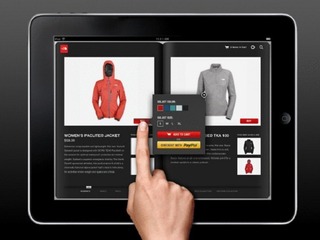
It seems crazy, but there was actually a time when there were only three television networks, and the only way to see content was to actually sit down at a certain time on a certain day and watch. How arcane!
Of course, that isn’t the world we live in anymore, and television content is available in a variety of different ways, even on our phones. A new study was released Monday showing how the increased accessibility of content is affecting how we watch. Does having the ability to watch what we want, when we want it, mean we are actually doing it?
Not even close.
Nine out of 10, or 90%, of people accessed the network and cable television shows on an actual television, while only 25% engaged online and 12% in online video, according to a new study by comScore and the Coalition for Innovative Media Measurement (CIMM), in a just-released a white paper, entitled How Multi-Screen Consumers Are Changing Media Dynamics. The study is meant to highlight how users are now engaging with brands across multiple platforms, including television, Internet and mobile.
Over a five week period in the Fall of 2011, 10,000 participants in 22 states, 1,000 of whom were active users of mobile Internet, had their mobile, television and Internet behavior monitored.
The study covered 10 networks (or “media brands”), six of which were cable networks, along with the four broadcast networks (CBS, ABC, Fox, and NBC). The study did not specify which cable networks were specifically covered.
When broken down, the results found that a vast majority, 72%, still only engaged with the brands through TV. Some 11% accessed them only through the Internet, while 17% were “multi-screen” users, meaning they accessed content through two of the means available: mobile, Internet or television.

Still, even the multi-screen users spent the large majority of their time accessing brands through a television.
Of course, since the study was covering television networks, the results showing that the majority of content were viewed on a television are not altogether shocking. Still, over a quarter of participants still access the networks digitally in some capacity, which is not an insignificant number.
When broken down by type, sports, news and young adult networks each had up to 30% of users accessing the network through TV and Internet.
One network had 30% of its audience using at least two of the three methods for accessing content, which comScore attributes to that network “making TV programming available on digital platforms, but also as a result of creating additional digital content as part of the media brand that appeals to its TV viewers to help extend the audience to the digital platforms.”
Other results from the study
Unsurprisingly, when broken down by age demographic, those aged 12-34 were far more likely to access content only digitally, while those over 50 were much more likely to access it through a televlsion. Five networks were only watched digitally by the younger demographic.

The study also suggests that those who engage in media consumption through both television and the Internet are the ones who engage the most with the brand, with those people spending an extra 25 minutes engaging with the brand.
“Consumers who build online video into their TV experience appear to be an important core constituency for media brands. On average across the ten media brands in the study, consumers who consumed the brands’ content via online video and TV consumed 25 percent more minutes on the TV platform than the TV audience overall, indexing at 125.”
The study also found that 60% of participants accessed the Internet at least one time while watching TV during the study, and that 29% of them access Facebook.
What consumers were not doing, though, was visiting the network’s website or accessing their video content while watch the network on TV. Only 25% did this, with one network having 10% of viewers access their content online concurrently.
“While TV remains the leading media channel, once TV-centric media brands now engage with their consumers across a variety of digital touchpoints. While this enhances the quality of brand engagement, it also increases the complexity of media planning and analysis by orders of magnitude,” Joan FitzGerald, comScore’s VP of TV and cross-media solutions, said in a statement.
“By leveraging comScore’s unique single-source multi-screen measurement panel, we are radically reducing this complexity by providing media companies with actionable insights that can be used to determine how to effectively reach their target audiences and optimize cross-media planning.”
CIMM, it should be noted, was founded by a group television networks: Current participants are: A+E Networks, AT&T, Belo, CBS Corporation, Carat USA,Comcast Networks, ConAgra, Discovery Communications, Gannett, GroupM, Hearst,Interpublic Group’s Mediabrands, Microsoft, NBC Universal, News Corporation,Omnicom Media Group, P&G, PepsiCo, Publicis Groupe, Scripps Networks,Time Warner, Unilever, Viacom, and The Walt Disney Company.
(Image source: http://www.flickr.com)


















